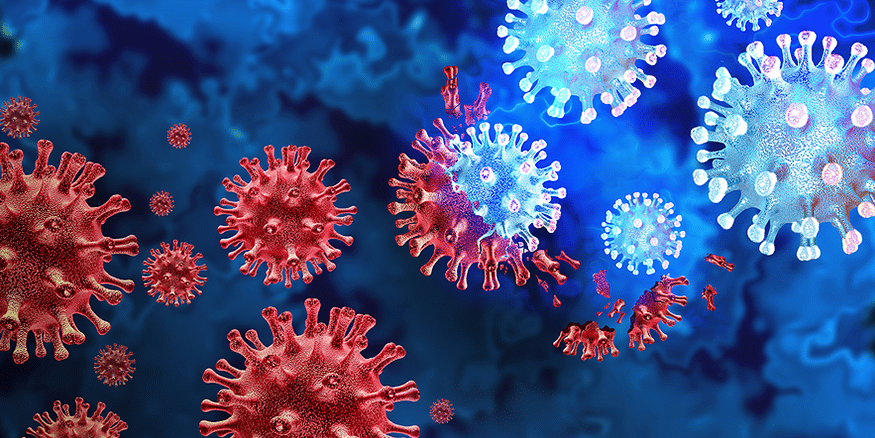
Scientists Design Molecule to Slow SARS-CoV-2 Infection and NLRP3
In the race to develop new therapies for COVID-19, scientists have made significant progress in designing a molecule that could slow the spread of SARS-CoV-2, the virus that causes the disease. The molecule, known as IU1, has been shown in laboratory studies to block the activity of a protein that the virus needs to infect cells, and could be used as a treatment for COVID-19 in the future.
Understanding the Role of the NLRP3 Inflammasome
The NLRP3 inflammasome is a complex of proteins that plays a key role in the body’s immune response to viral infections. When activated, the inflammasome triggers the production of cytokines, which are small signaling molecules that attract immune cells to the site of infection and help to mount a defense against the virus.
However, in some cases, the NLRP3 inflammasome can become overactive, leading to an excessive production of cytokines that can cause inflammation and tissue damage. This is known as a cytokine storm, and is thought to be one of the main drivers of severe COVID-19 disease.
IU1 and the NLRP3 Inflammasome
In laboratory studies, IU1 was shown to inhibit the activity of the NLRP3 inflammasome by blocking the activity of an enzyme called USP14. USP14 is a key regulator of the inflammasome, and by inhibiting its activity, IU1 was able to reduce the production of cytokines in response to viral infection.
This suggests that IU1 could be used as a treatment for COVID-19 to help reduce the severity of the disease and prevent the development of a cytokine storm. However, more research is needed to confirm these findings and to determine the optimal dose and delivery method for IU1.
The Potential Benefits of IU1
If IU1 proves to be effective in clinical trials, it could offer several benefits for the treatment of COVID-19. Firstly, by reducing the production of cytokines, IU1 could help to prevent the development of a cytokine storm and reduce the risk of severe disease and death.
Secondly, IU1 could be used in combination with other therapies to enhance their effectiveness. For example, IU1 could be used in conjunction with antiviral drugs to reduce the spread of the virus and limit the damage to the body.
Finally, IU1 could be used as a preventative measure to reduce the risk of COVID-19 infection in high-risk populations, such as healthcare workers and the elderly. By blocking the activity of the NLRP3 inflammasome, IU1 could help to reduce the severity of the disease and prevent the development of complications.
The Challenges of Developing IU1 as a Therapy for COVID-19
While IU1 shows promise as a therapy for COVID-19, there are several challenges that need to be addressed before it can be used in clinical practice.
Firstly, IU1 needs to be tested in clinical trials to determine its safety and efficacy in humans. This will require significant investment and resources, and may take several years to complete.
Secondly, IU1 will need to be developed into a suitable delivery method, such as a pill, injection, or inhaler. This will require expertise in drug formulation and delivery, and may add additional costs and complexity to the development process.
Finally, IU1 will need to be manufactured at scale and at an affordable cost. This will require significant investment in manufacturing infrastructure and supply chain management, and may pose additional challenges in terms of quality control and regulatory compliance.
Conclusion
IU1 represents an exciting new development in the fight against COVID-19. By inhibiting the activity of the NLRP3 inflammasome, IU1 has shown the potential to reduce the severity of the disease and prevent the development of complications. However, there are several challenges that need to be addressed before IU1 can be used as a therapy for COVID-19, including clinical testing, drug formulation, and manufacturing.
Despite these challenges, IU1 represents a promising avenue for future research and development in the fight against COVID-19. As the world continues to grapple with this global pandemic, it is important that scientists and researchers continue to explore new and innovative approaches to developing effective therapies and vaccines that can help to save lives and prevent the spread of the virus.
Visit DocMode for Courses and lectures
